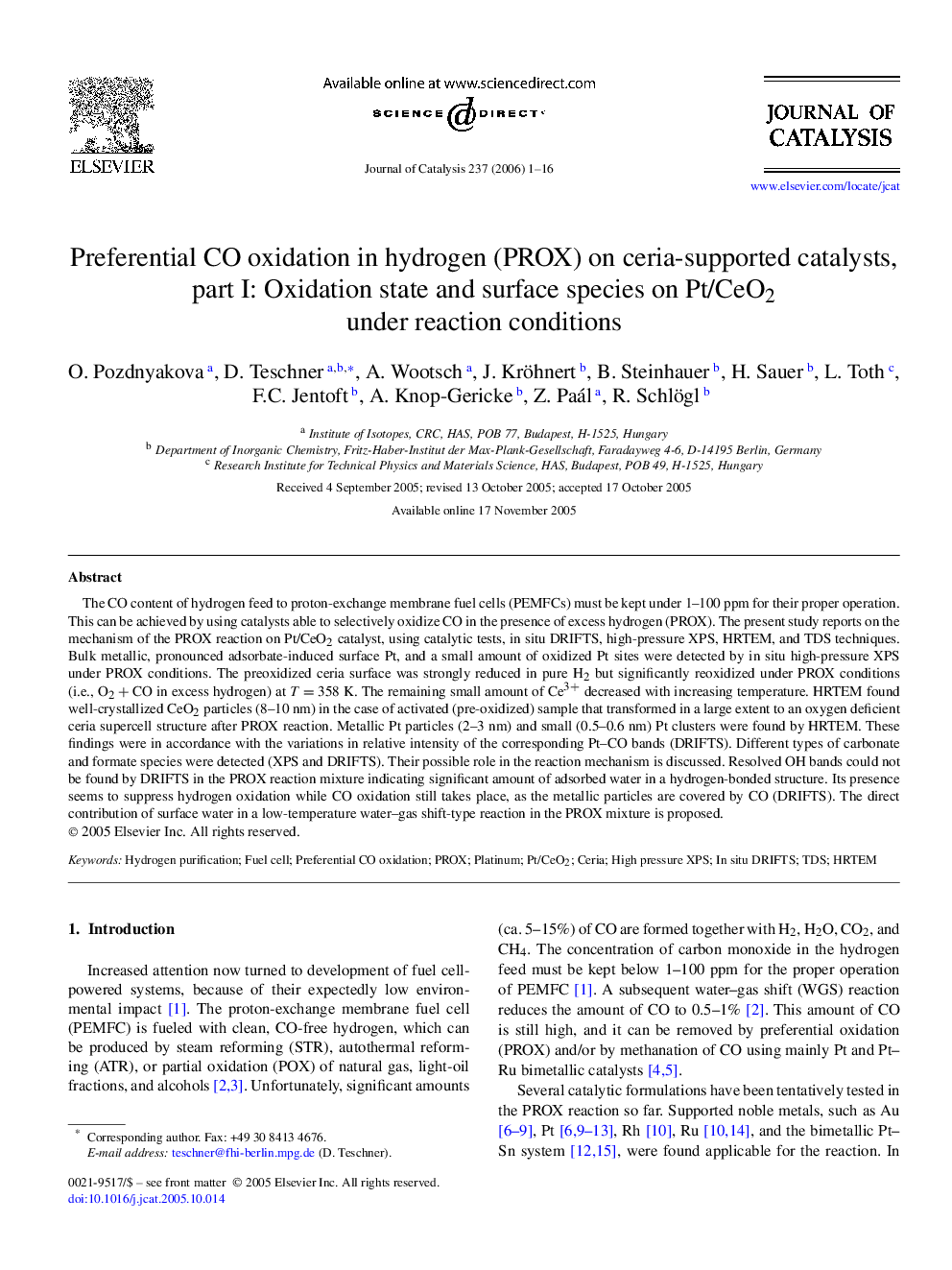| Article ID | Journal | Published Year | Pages | File Type |
|---|---|---|---|---|
| 63410 | Journal of Catalysis | 2006 | 16 Pages |
The CO content of hydrogen feed to proton-exchange membrane fuel cells (PEMFCs) must be kept under 1–100 ppm for their proper operation. This can be achieved by using catalysts able to selectively oxidize CO in the presence of excess hydrogen (PROX). The present study reports on the mechanism of the PROX reaction on Pt/CeO2 catalyst, using catalytic tests, in situ DRIFTS, high-pressure XPS, HRTEM, and TDS techniques. Bulk metallic, pronounced adsorbate-induced surface Pt, and a small amount of oxidized Pt sites were detected by in situ high-pressure XPS under PROX conditions. The preoxidized ceria surface was strongly reduced in pure H2 but significantly reoxidized under PROX conditions (i.e., O2 + CO in excess hydrogen) at T=358 KT=358 K. The remaining small amount of Ce3+ decreased with increasing temperature. HRTEM found well-crystallized CeO2 particles (8–10 nm) in the case of activated (pre-oxidized) sample that transformed in a large extent to an oxygen deficient ceria supercell structure after PROX reaction. Metallic Pt particles (2–3 nm) and small (0.5–0.6 nm) Pt clusters were found by HRTEM. These findings were in accordance with the variations in relative intensity of the corresponding PtCO bands (DRIFTS). Different types of carbonate and formate species were detected (XPS and DRIFTS). Their possible role in the reaction mechanism is discussed. Resolved OH bands could not be found by DRIFTS in the PROX reaction mixture indicating significant amount of adsorbed water in a hydrogen-bonded structure. Its presence seems to suppress hydrogen oxidation while CO oxidation still takes place, as the metallic particles are covered by CO (DRIFTS). The direct contribution of surface water in a low-temperature water–gas shift-type reaction in the PROX mixture is proposed.
